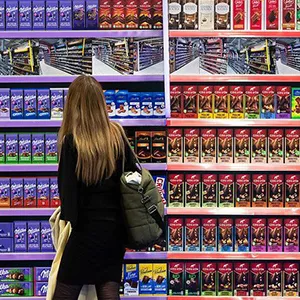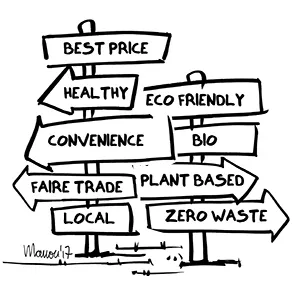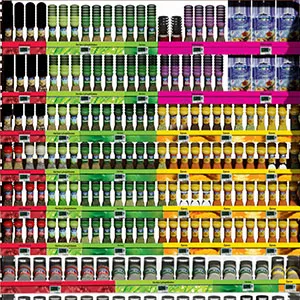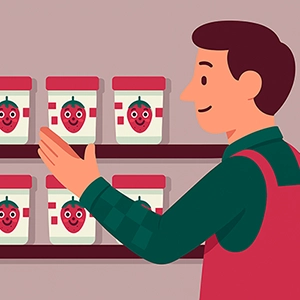The key to relevant shopper marketing:
About the act of purchase and the purchase decision
Have you ever wondered what is really going on deep inside a buyer at the moment when he or she purchases your product in a store? Does he follow a routine, buy on impulse, or, to bravely proceed with the purchase, does he require more than usual consideration? To create relevant POP (point-of-purchase) marketing levers, it comes in handy to understand the act of purchase and purchase decision-making. In this article, we look at what really happens within the aisles and how visitors engage with the store offering.
1600 words
#POP #shoppermarketing #pointofpurchase #retail
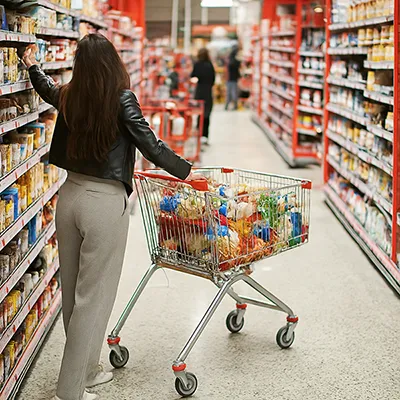
When discussing a creative brief, we often wonder what audience a POP campaign aspires to. All marketing communication is about focus and targeting, and POP marketing is no exception. Sometimes, answers would sound like, based on recent market research, 55% of our target consumers are women aged 19 to 49 with average incomes.
Alas, this information doesn't provide the complete picture. It's tricky to translate this into how you target audience shops. A POP specialist is more interested in understanding how shoppers behave, and how and where purchase intention can be influenced — the essence of any POP campaign.
Regardless of gender or age, everyone goes to the store with one or more goals in mind - or "missions". These can largely be accomplished with three types of buying behaviour: routine, impulsive or considered.
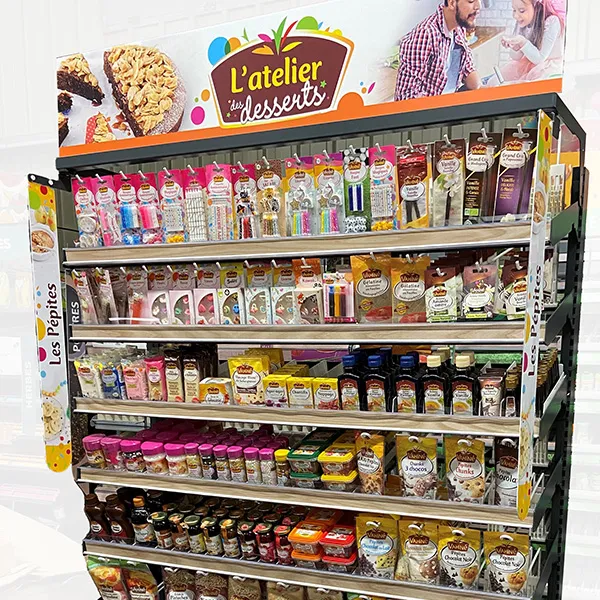
Pilotes makes commercial furniture, display and merchandising solutions. We offer 100% customized point-of-purchase materials tailored to the in-store projects of brand and retail. Because we care about the climate and environment, we analyze the lifecycle of each project to avoid, reduce, and offset its impact 🌍🌿
Do you have a project planned? Contact us and let’s bring your vision to life together!
Routine buying, easy and convenient
Routine or habitual buying is rather planned and task oriented.
The customer hardly allows himself to be directed: he knows exactly what he needs, wants to easily find it, buy, and move on. Apart from price considerations, he does not put a lot of thought.
The buyer often perceives this type of behaviour as a chore — something burdensome and energy-consuming. To make routine buying easy, fast, and preferably both, it's important for retailers and manufacturers to focus on convenience and efficiency.
“The ideal supermarket provides a warm welcome, is clean, tidy, and explicit. Customers can do their buying reasonably efficiently and easily find what they're after", Wouter Kolk, CEO Ahold Delhaize.
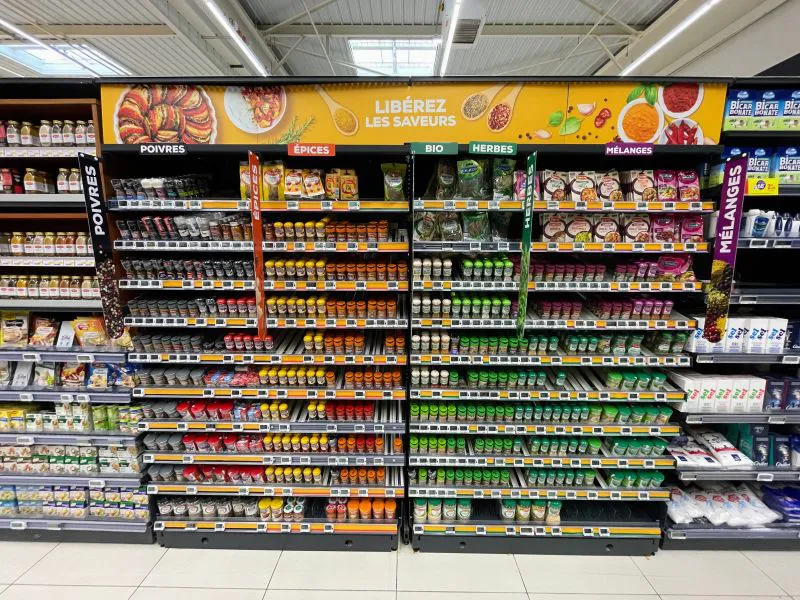
In a world of choices, merchandising proactivity is the key to create a welcoming environment. The shelves are arranged in a way that they engage, so to speak, in a dialogue with the shopper; intuitive layout and animation of the shelves, placement and accessibility of the products, curated displays and the use of signpost or anchor brands do the heavy lifting. They lead the way for the customer, who will always focus his attention on the offer as he browses the aisles.
Discover more > Merchandising in retail: the whisperer of temptation to drive sales"Retailers should know that the buyer only looks for signposts when he is completely lost or confused. It's crucial for stores to be intuitive and self-explanatory," Katelijn Quartier, academic director of the Retail Design Lab. (source)
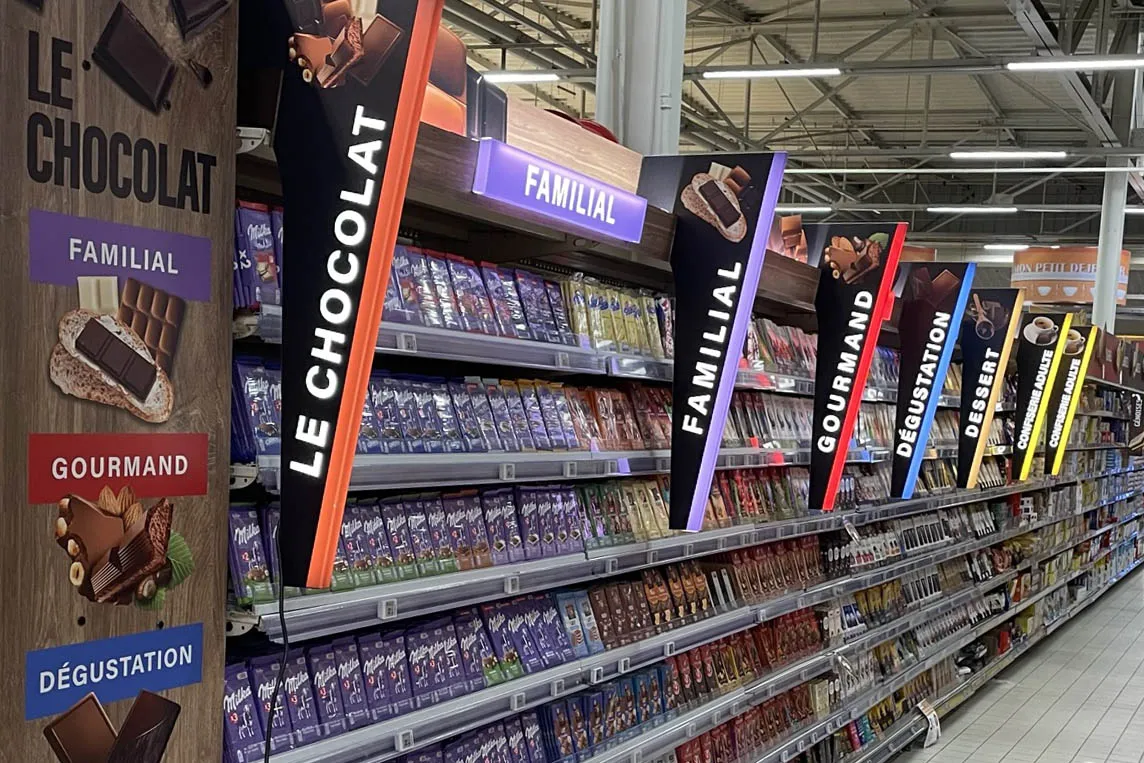
These strategies make the shopper journey as effortless as possible. By reducing the cognitive load — and frustrations, the customer can direct more time and energy on impulse purchases, content with the completion of his tasks, and confident that checking out and the escape to the outside world will go just as smoothly. Therefore, easing the pain to pay is equally part of a positive buying experience.
Impulsive buying, spontaneous and cheerful
Impulse buying, browsing or recreational shopping, happens spontaneously, randomly, without much planning in advance. Today, impulsive buying behaviour has become the most significant trend in retail. Because the consumer ends up buying more than what he originally had planned for, impulse buying is an appealing aspect of consumer behaviour.
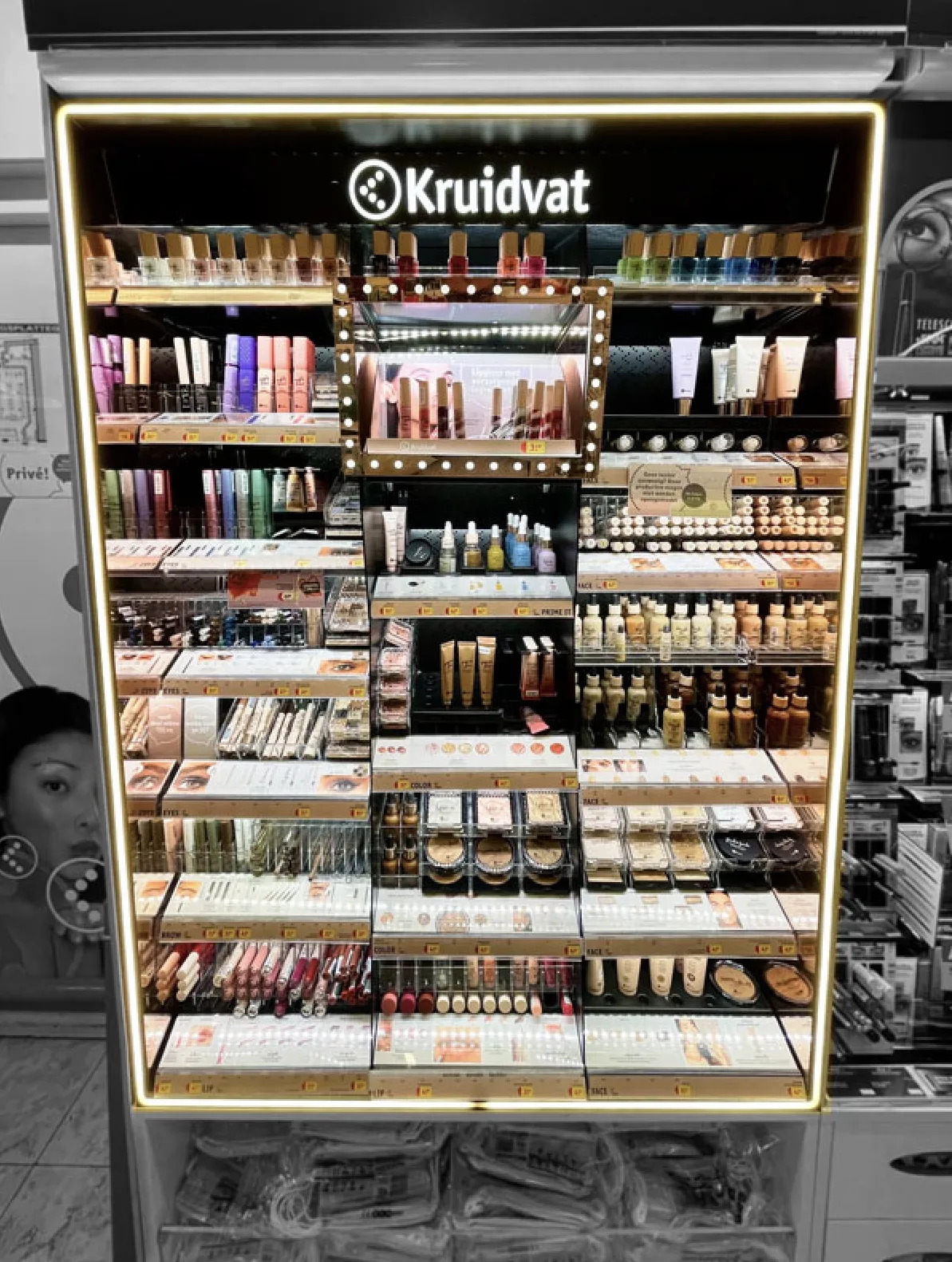
In its purest form it is a positive experience where the customer allows himself, whether conscious or not, the leisure to wander the aisles, to explore and discover, with or without the intention of buying, or simply looking at the variety on offer. Other triggers can suggest or remind — that display for batteries in the toys section didn't happen by accident.
Discover more > Stimulate sales with cross-merchandisingPurchases are decided under less time pressure, often in-store, and the focus is less on price. A dynamic of excitement, engagement and other reward drives is the key to unlocking this buying behaviour.
"Many of the actions we take each day are simply a response to the environment we find ourselves in. We buy things not necessarily because we want them, but because of how they are presented to us", James Clear — The Candy Trigger By The Checkout LineDiscover more > Front-end checkout displays drive impulse buying
To encourage pure impulsive behaviour, retailers and manufacturers brighten up the buying experience with extrinsic triggers, sensory vibrancy, soothing atmosphere, promotional incentives, enjoyable delight, etc. Each store can create its unique tactics, as long as they strike the right chord in accordance with the assortment. They are deployed to encourage the customer to focus less on premeditated tasks and interact with the products, embracing the experience.
A happy customer who adopts purely impulsive behaviour is more likely to make additional purchases, to consider upgrades, and to return more frequently; that’s the adage of discovery or hedonic shopping.
Considered buying — I need help
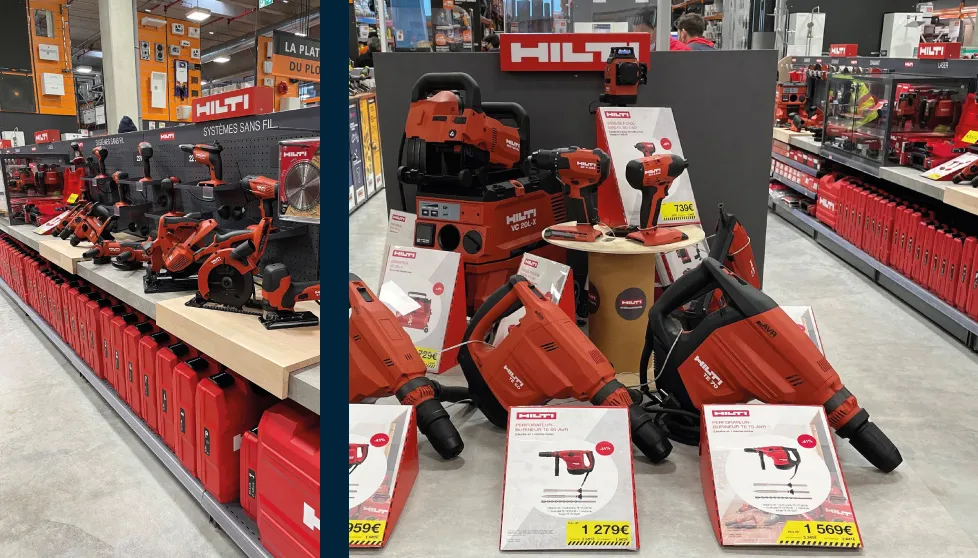
Every purchase involves a certain degree of uncertainty. But when the buyer is faced with more complex product offerings to solve his problem, he may feel more tension than usual to make the right, important decision.
The degree of decision making, or the process which leads to selection or reasoned action, and his involvement will vary depending on the situation, and the personality of the buyer. Maybe he seeks to justify his purchase in the context of various motivations, such as health. Or, despite his involvement, he notices few differences between the options.
Either these uncertainties remain limited to a hint of stress, and the buyer persists, bravely reducing dissonance when his purchase is not perfectly aligned with his considerations. Or it quickly becomes uncomfortable. And these negative emotions can lead to decreased interest, delaying, or even cancelling the purchase.
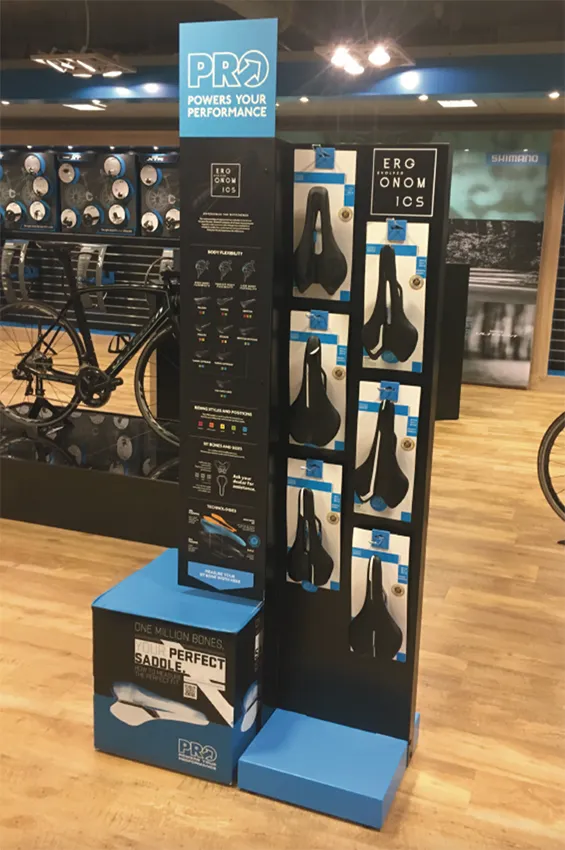
In most cases, the buyer seek help. Planning is the first step he undertakes. And even beyond the purchase, uncertainty may persist. And while a smooth return policy can ease the pain, retailers and manufacturers will do everything they can to help him immediately by providing explicit presentations, intuitive navigation aid, and educational support on the shelving.
“The buyer wants to solve a problem by finding the right product, and move on; he doesn't want to hear how great your brand is or watch your TV commercial." — Mike Anthony - Shopper Marketing Expert
Positive emotions, a sense of trust and expertise or the serenity of a brand, can win over the troubled customer. By providing a reassuring experience and building liking, retailers and manufacturers can ease tension and encourage a thoughtful and satisfying act of purchase, the final stage of the consumer's decision-making process.
The context influences behaviour
Buying behaviour is also influenced by context, and the type of store, or the category the buyer chooses to buy from.
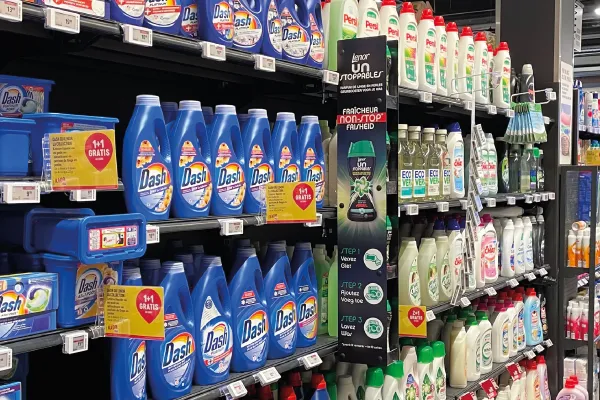
For instance, in the fresh food section of a small convenience store, a visitor may be looking for a quick snack. Or if he forgot to buy one, he might snatch one along at the checkout if it catches his eye. However, in a larger supermarket, the same person might be seeking inspiration for a healthy snack in the fridge for the family. Or he might need to restock the pantry with a popular four-hour snack for the youngest's lunch box, or else tears will flow.
In practice, during his visits, every customer presents a combination of the three patterns to varying degrees, depending on personality, values, preferences, mood, needs, product, category, and context. No two purchases are really the same. With greater understanding of the fascinating complexity of the intention and the act of purchase, retail actors can deliver more relevant and engaging in-store marketing levers.
Are you interested in the benefits of POP and display materials? Contact us today; we'll be delighted to help you develop your future POP displays, retail furniture or innovative merchandising solutions.
